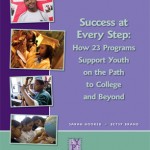Last Thursday the Senate Health, Education, Labor and Pensions Committee held a field hearing in Columbus, OH at the Metro Early College High School to explore college and career readiness. Witnesses included:
- Bob Caldwell , Superintendent, Wolf Creek Local School District, Waterford, OH
- Kristi Phillips-Schwartz , Director of Education Initiatives, Cincinnati Business Committee, Cincinnati, OH
- Crystal Jordan , Student, Metro Early College High School, Columbus, OH
- Jacqueline Silas-Butler , Executive Director, Project GRAD, Akron, OH
- Steven Jackson , Senior Vice President, Great Oaks Career Campuses, Great Oaks District Office, Cincinnati, OH
Crystal Jordan spoke about her experiences as a senior at Metro Early College High School, where students are expected to complete all of their high school requirements and up to 60 hours of college credit in four years. This program has allowed her to explore career fields in STEM and take college courses at no cost which has helped her defray the cost of college and has given her the opportunity to better decide which area of interest she will pursue at The Ohio State University next year.
Steven Jackson explained that Great Oaks offers CTE programs for students in 36 school districts in southwestern Ohio and is one of the largest such districts in the United States. Great Oaks provides students with many opportunities to be prepared for college or a career when they graduate. Students earn industry credentials and certifications as they complete Great Oaks programs, including practical nursing license, EMT certification, or certification as a professional firefighter, dental assistant, heating and air conditioning technician, welder, or animal care technician. Within a year of graduation, about 92% of graduates are working in their career field, continuing their education, or are in the military. Great Oaks also offers the Gateway to Success program, which is a nationallyâ€recognized program which helps young adults who have dropped out from their high school earn a high school diploma.
This hearing was a great opportunity for Senators to get out of Washington and see what is happening on the ground, and what works. Hopefully they will take away from this hearing the importance of accelerated learning programs and CTE in preparing students for college and careers.


 This morning, U.S. Secretary of Education Arne Duncan testified before both the Senate Health, Education, Labor and Pensions Committee and the House Education and Labor Committee about the Department of Education’s
This morning, U.S. Secretary of Education Arne Duncan testified before both the Senate Health, Education, Labor and Pensions Committee and the House Education and Labor Committee about the Department of Education’s  At the House
At the House 